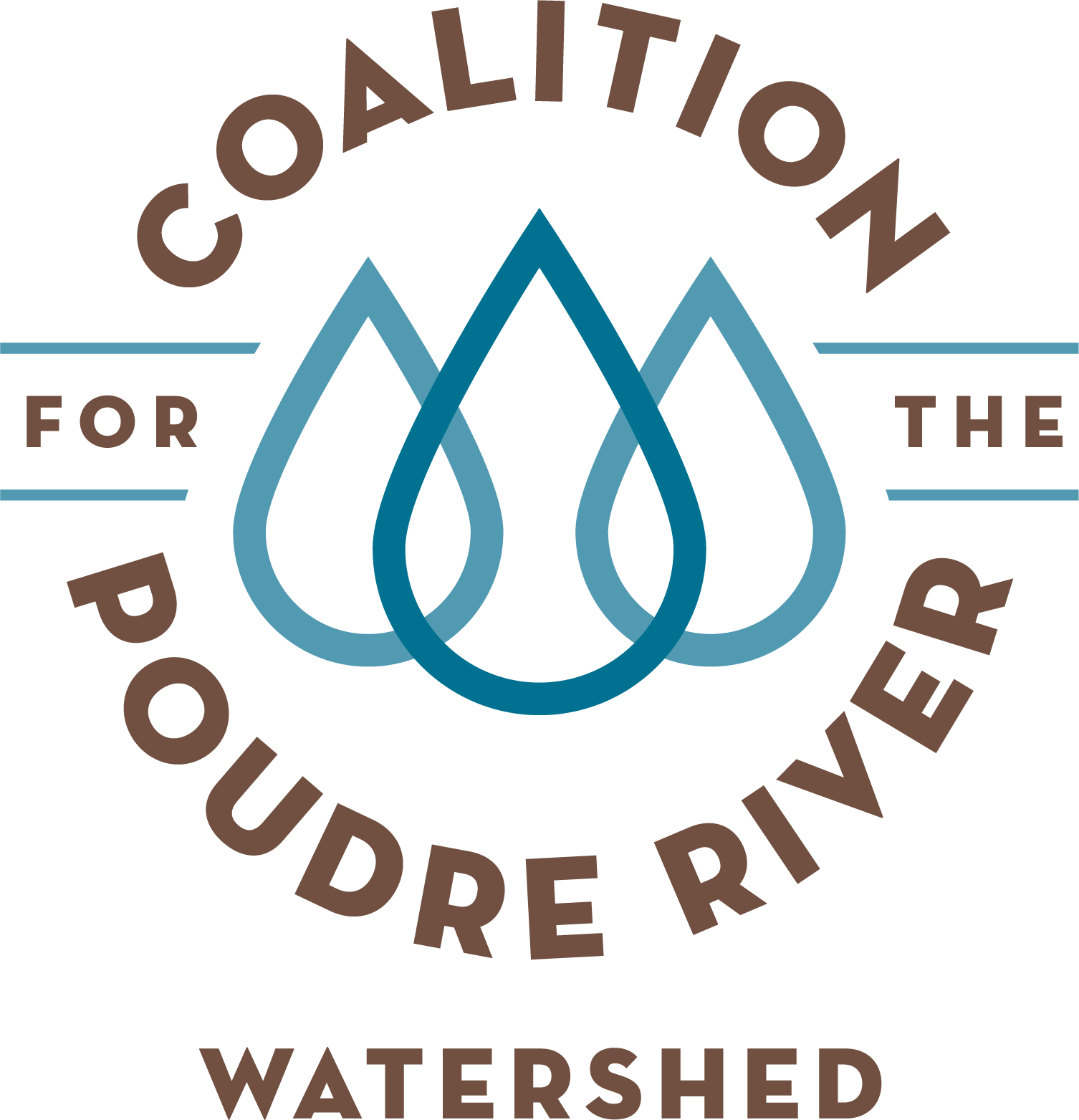Cameron Peak Post-Fire Restoration – 2021 Accomplishments & Plans for 2022
Typically, a fire-affected watershed requires 10 years to recover hydrologically from the wildfire. Because these effects are most pronounced in the first few years of watershed recovery, emergency mitigation efforts are essential to protect valuable resources from debris flows and debris floods (Robichaud et. al., 2010).” – Cameron Peak Fire: 2022 Point Mitigation Priorities, Concepts, and Implementation, Ayers & Associates
Over the past year, CPRW staff and partners at the City of Fort Collins, City of Greeley, Big Thompson Watershed Coalition and Larimer County have dedicated most of their working hours to Cameron Peak Fire recovery, pulling together funding, resources, best available science, and a shared love for the Poudre and Big Thompson watersheds to restore thousands of acres of burned land. This large collaborative effort is helping to jump start many of the natural processes that occur in a post-fire landscape, especially in areas that were severely burned in this historic wildfire.
The purpose of CPRW’s Post-Fire Restoration Program is to mitigate the negative impacts of the Cameron Peak Fire to high priority watershed values, including water quality and supply, river ecosystem function and health, and community protection and resilience. Our work would not be possible without strong partnerships, generous funders, and a collective vision of a resilient Poudre Watershed.
Crew members install willow fences at Jack’s Gulch within the Cameron Peak burn area.
In 2021, Cameron Peak recovery partners:
Completed aerial mulching of 5,800 high priority acres within the burn area – the largest aerial wood mulching operation in the country (includes treatments in the Poudre and Big Thompson Watersheds).
Completed mitigation work on over 40 acres of land – including the installation of hundreds of wattles, as well as a variety of mitigation treatments that utilize on-site and native materials to creatively reduce hillslope erosion, stream incision and headcut and revegetate riparian areas.
Planted thousands of trees in the burn area, helping to restore forested areas of the watershed that have been impacted by both the Cameron Peak and High Park fires
Worked with researchers at Colorado State University and Rocky Mountain Research Station to begin studying the impacts of restoration work on a variety of watershed processes
Organized citizen scientists to help monitor water quality in the burn area
Managed hundreds of volunteers to complete mitigation and restoration work in both the Big Thompson and Cache la Poudre watersheds
Educated the public on the impact of wildfire in the watershed and how post-fire restoration work benefits the land and our shared water resources
In 2022, as funding allows, CPRW and our partners are planning to:
The Cameron Peak aerial mulching operation is the largest wood mulch operation in the country.
Continue aerial mulching operations in the upper Poudre Canyon. Partners have identified more than 10,000 acres of private and public lands within priority sub-watersheds of the Poudre and Big Thompson that still need to be treated.
Continue erosion control and restoration work to protect water quality, life and property within targeted areas of the upper Poudre watershed. Approximately $10 million worth of mitigation work has been identified throughout the Poudre and Big Thompson watersheds.
Plant approximately 4,000 trees in spring 2022 on private lands within the burn area to help re-establish forests. Depending on tree availability and funding, we will continue to plant trees in the Fall of 2022 and Spring of 2023, with a goal of planting nearly 30,000 trees over an 18-month period.
Expand CPRW’s Citizen Science Water Quality Monitoring program to include more volunteers and collection sites
As we work with our partners to plan for restoration projects in 2022 and beyond, we encourage the community to stay engaged with this important wildfire recovery work. You can get involved by 1) Joining our volunteer email list to stay up-to-date on upcoming volunteer opportunities; 2) Signing up for our email newsletter and by 3) Making a donation to support this important post-fire restoration work. Our livelihoods depend on a healthy Poudre River. Wildfire has negatively impacted many parts of the watershed, and we expect to see the negative impacts for years to come. Together, we can help create a more resilient Poudre River Watershed moving forward.


